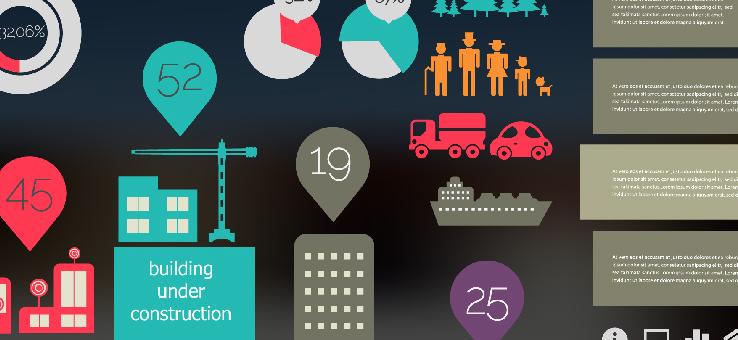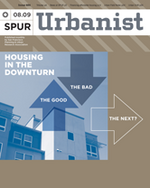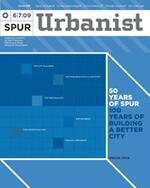
Norwegian Highway Art
News / Should you be driving on the highway in rural northwest Norway keep your eyes peeled for more than just the natural beauty. The Norwegian national road agency is in the midst of a $1.6 billion project that attempts to lure tourists to this often over-looked area by highlighting the landscape with architecture--in the shape of viewpoints, rest stops, benches, winding foot bridges and stairs leading…
A Guide to California's SB 375
News / NRDC has just released a guide to SB 375, the nation's first legislation to link transportation and land use planning with global warming. The goal of this legislation is to foster development patterns that reduce the need to drive. Household transportation is the single largest and fastest-growing source of global warming pollution in California. SB 375 will also help save money for households and…
A Primer on Federal Climate Policy
News / Our friends at the Sightline Institute in Cascadia have put together a primer on the federal climate bill, aka the American Clean Energy and Security Act (ACES), aka Waxman-Markey, that passed the U.S. House of Representatives late last week. Cap and Trade 101 features what you need to know about cap and trade, pollution auctioning, offsets, and why national climate legislation is good for families. …
Relax in Times Square
News / Times Square has under gone a transformation lately, with lounge chairs replacing traffic and conversations replacing honking taxis. This coned-off chunk off Broadway is one of a number of experiments with public space happening around the city. New York City's Department of Transportation is trying out various spots to see where roads currently set aside for traffic could be turned over to pedestrian and bikes …
Raising the Bar, and the Park
News / Earlier this month, after ten years of advocacy from neighbors, activists and artists alike, the first of three sections of New York's High Line park opened for visitors. The 1.45 mile-long park is situated on a defunct 19th century elevated train track that used to carry cattle into the Meatpacking District, but had been left standing since 1980, when nature adopted it, and turned it…
A better, or at least higher, use of open space
News / We spend much of our days with a roof over our heads, but rarely think of how roof exteriors could be so much more than just a weather shield. The growing urban rooftop farming movement just may change that. An article in today's New York Times describes how the green roof movement and the healthy food movement are converging. City policies can play a role…
One Way to Manage Shrinking Cities
News / The UK Guardian recently reported from beleaguered Flint, Mich., on a new plan to shrink the city by actually bulldozing unused buildings and neighborhoods. The idea is to concentrate the dwindling population and city services into a smaller area, or as Detroit has envisioned, many smaller urban centers separated by "forests and meadows". This proposal is apparently attracting the attention of the Obama administration. Is…
Former USDOT Chief Norm Mineta (Bay Area's Own) in a Revealing Interview
News / In an interview with DC Velocity, Norm Mineta, President Bush's Secretary of Transportation and a Democrat from San Jose, provides some fantastic insight into the challenge facing our new DOT chief. Mineta stresses the increasing inadequacy of the federal gas tax. Set at 18 cents per gallon since 1993, total receipts have decreased with inflation and improved fuel economy. The federal transportation account is deeply…
SPUR Urban Center Grand Opening
50 years of SPUR, 100 years of building a better city
The Urbanist / toAgents of Change: A Sneak Peak
News / We're nearly done installing SPUR's first exhibition, Agents of Change: Civic Idealism and the Making of San Francisco. Here's a sneak peak of how it's shaping up—thanks to an amazing cadre of volunteers who have been working around the clock to get the show installed before it opens this Friday. I have learned so much from working on this show with our brilliant and…
Agents of Change: A Sneak Peak
News / We're nearly done installing SPUR's first exhibition, Agents of Change: Civic Idealism and the Making of San Francisco. Here's a sneak peak of how it's shaping up—thanks to an amazing cadre of volunteers who have been working around the clock to get the show installed before it opens this Friday. I have learned so much from working on this show with our brilliant and…
Board Fails to Reject SFMTA Budget
News / Only five members of the Board of Supervisors today voted to reject the SFMTA budget, two short of the supermajority of seven needed to reject it. The supermajority requirement was put in the City Charter by Proposition A and Proposition E (both in part crafted by SPUR) to create a balance between the need to defend the SFMTA from political influence and give the city's…
Channeling Christo
News / Yesterday we staged a dress rehearsal for our big day next Thursday—when we'll unveil the Urban Center to over 1,000 people at our grand opening celebration. The scene caused quite a stir on this once-sleepy 600-block of Mission. Cars slowed; sidewalks filled; the Peet's patron paused. Sudden gusts of wind caused only minor complications, and leant a certain drama to the occasional glimpse of…
The Alliance for Biking & Walking Works the Bike Caucus
News / The Alliance for Biking & Walking, a national coalition of advocacy organizations, is working the Congressional Bike Caucus. The Caucus represents a majority of members who support an increased federal role in promoting bicycling as a solution to our nation's transportation crisis, not to mention our health and environmental crises. In the attached letter from the Bike Caucus Chair, Rep. Earl Blumenauer (D-Portland, OR), you'll…
How Will Shoreline Cities Respond to Sea Level Rise?
News / Just wanted to point your attention to the Bay Conservation Development Commission's upcoming design competition. The jury is seeking ideas inspired by "the common characteristics of estuaries" to prepare and adapt shoreline cities to the challenges of sea level rise. Entries will be displayed in the Ferry Building on July 14-19. Designers: still time to enter your proposal! Here's an excerpt from the competition…
It's Amazing What Four (Big, Bright Orange) Letters Can Do
News / We've been stealthily—until today—working away in our new building at 654 Mission Street to get ready for the grand opening of the Urban Center next week. Now there's no mistaking where we've been hiding out!
Market Street Draft Study Released
News / The Transportation Authority today released the draft Strategic Analysis Report on "Transportation Options for a Better Market Street." SPUR has long considered potential improvements to Market Street, and advised the Transportation Authority on the scope of this SAR. We urged the agency to be bold, but positive. That is, we emphasized that a study of Market Street ought to focus on the goals…
When Urbanism and Accessibility Aren’t in Step
News / Accessibility for persons with disabilities, New Urbanist planners and architects will tell you, is an important principle. Still, other New Urbanist principles can come into conflict with accessibility; or, at least, they often clash with interpretations of the Americans With Disabilities Act, or with accessibility as defined by disability-rights advocates. Take February’s “Lifelong Communities” charette in Atlanta, at which Congress for the New Urbanism…

